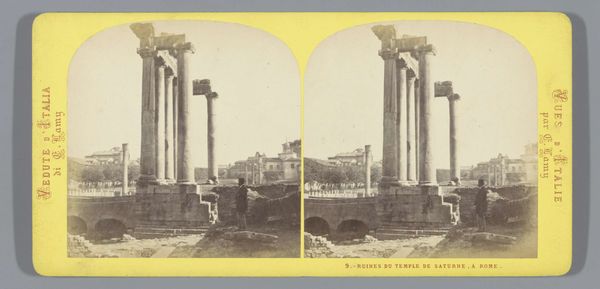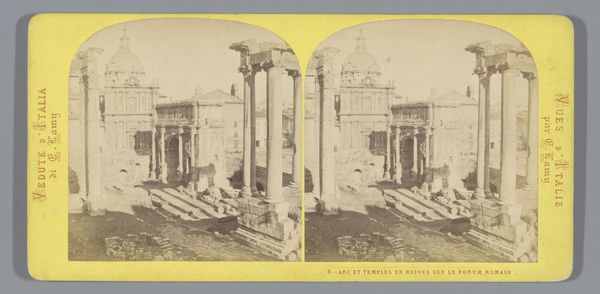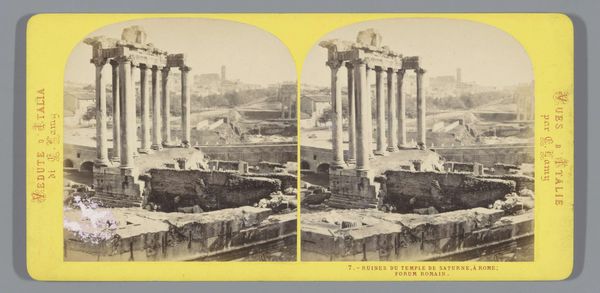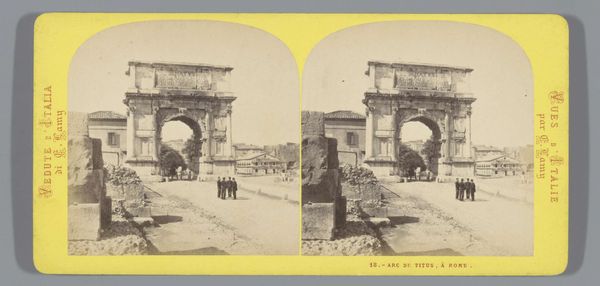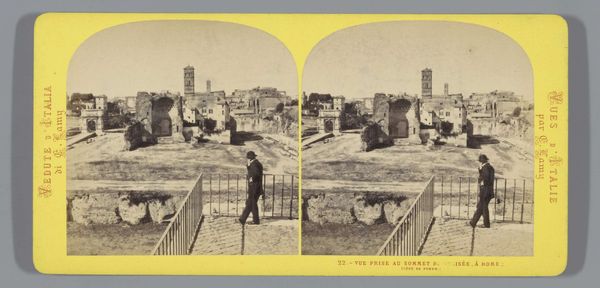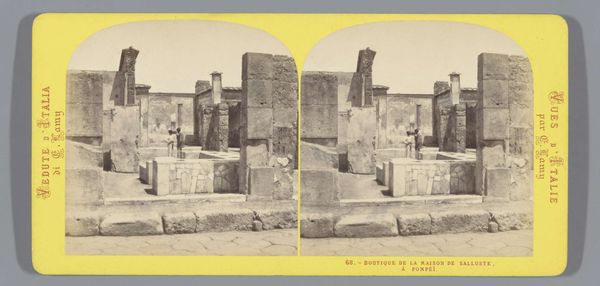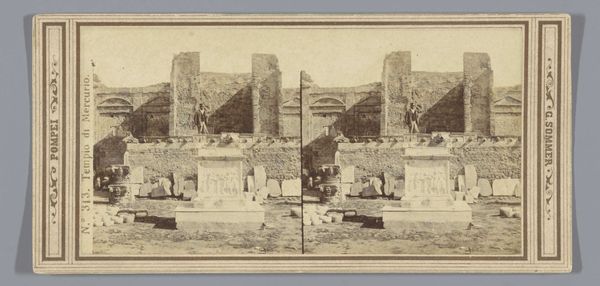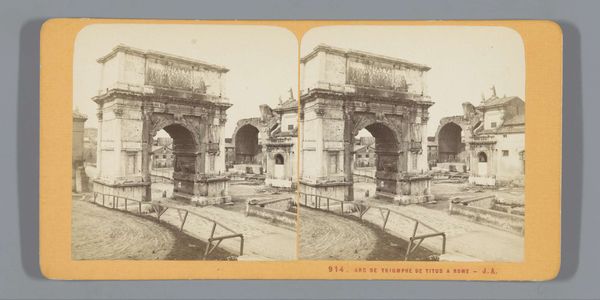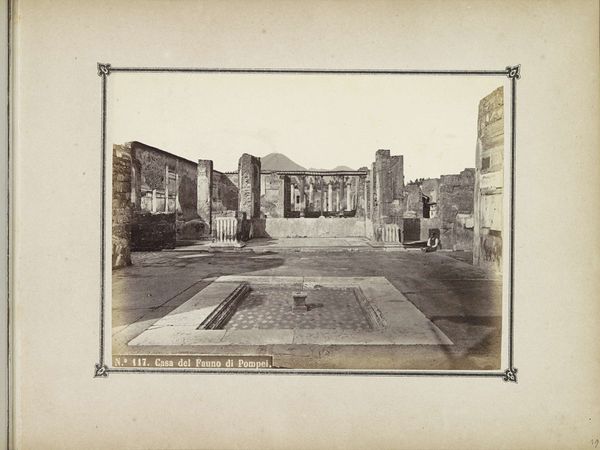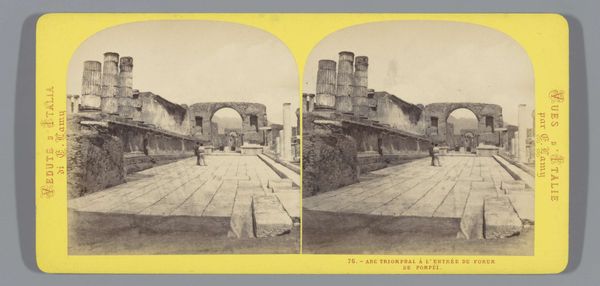
Dimensions: height 87 mm, width 178 mm
Copyright: Rijks Museum: Open Domain
This stereoscopic image captures the Temple of Castor and Pollux in Rome, and was created by Ernest Eléonor Pierre Lamy. The image speaks to the burgeoning tourist industry of the 19th century, where photography served as both documentation and souvenir. This format, designed for a special viewer, offered a simulated three-dimensional experience, enhancing the sense of 'being there' for a distant audience. Consider the social implications: who could afford such a memento? And what did it mean to consume a place like Rome, laden with historical and cultural significance, through this medium? The Temple itself, a ruin even then, becomes a symbol not just of ancient Rome, but of its appropriation and commodification in Lamy's time. By examining travel guides, personal letters, and economic data from the period, we can better understand the relationship between tourism, photography, and the evolving perception of cultural heritage. Art, in this context, reflects and reinforces social structures.
Comments
No comments
Be the first to comment and join the conversation on the ultimate creative platform.
